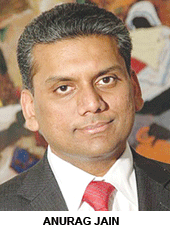 If India is to regain its 2004-05 growth rate of 9 percent, it not only has to usher in a second round of economic reforms but more importantly, it has to ensure the development of a skilled workforce to support reform initiatives. Today the demand for employable youth is over 10 million-plus against supply of about 4 million. To bridge this gap, there’s immediate and urgent need to promote initiatives towards developing a viable and sustainable framework for skills development on a mass scale. A measure of the magnitude of this challenge is that a 50 percent larger workforce than it has today will be required in Indian industry by 2015. A white paper written during my tenure as the chairman of FICCI’s skills development forum in 2009-10, offers a clear picture of the factors behind the skills gap phenomenon and provides solutions to address this mammoth problem.
If India is to regain its 2004-05 growth rate of 9 percent, it not only has to usher in a second round of economic reforms but more importantly, it has to ensure the development of a skilled workforce to support reform initiatives. Today the demand for employable youth is over 10 million-plus against supply of about 4 million. To bridge this gap, there’s immediate and urgent need to promote initiatives towards developing a viable and sustainable framework for skills development on a mass scale. A measure of the magnitude of this challenge is that a 50 percent larger workforce than it has today will be required in Indian industry by 2015. A white paper written during my tenure as the chairman of FICCI’s skills development forum in 2009-10, offers a clear picture of the factors behind the skills gap phenomenon and provides solutions to address this mammoth problem.
To bridge the skills gap bedevilling the economy, the government of India has belatedly launched several initiatives to meet the daunting challenge of skilling over 500 million citizens by the year 2020. Based on the FICCI white paper, I offer a comprehensive agenda to redress the widening skills gap balance.
Building awareness. One of the greatest challenges confronting contemporary Indian society is lack of awareness about the importance of skills development training. Traditionally, vocational trades have been perceived to be low end jobs and hence lack respect within society. With most jobs available in the unorganised sectors of the economy, information about job opportunities is also limited. Moreover there’s minimal thrust in the Indian education system for vocational education and training (VET). Therefore while the formal and vocational education streams become better aligned, there is a need to rebrand VET as skills development.
Mobilising funds. Lack of sustainable sources of funds and inadequate credit availability to VET providers makes it difficult to develop a pool of urgently required skilled workers. A national skills development loan guarantee fund needs to be created by the Central government, financial institutions and international aid agencies to underwrite bank loans and flexible micro-credit repayment schemes.
Building and maintaining infrastructure. Distance education, ICT capacity, regional disparities in infrastructure, among other factors, need to be addressed to ensure consistent output of trained professionals. For this purpose, training centres need to be established closer to people, and minimum standards need to be prescribed for VET/skills development institutions.
Evolving and implementing high standards. Lack of standardised facilities and curriculums is a major disincentive to youth signing up for VET programmes. Therefore there’s a pressing need to standardise assessment and certification processes to create strong VET brands which assure all stakeholders — education entrepreneurs, students, parents and employers — of the value of skills development study programmes.
Vocational training framework. The major infirmities of currently available VET programmes are the diffused input skills offered and lack of orderly gradation of courseware. The quality of study programmes and certification of trainers is also suspect. In this context, the National Vocational Training Framework which aligns various vocational training degrees/diplomas/certificates nationally, will provide a boost to employment as employers begin to understand that VET providers are obliged to produce acceptable quality output consistently. Likewise, sector-specific competency standards need to be prescribed.
Employment. Skilled people countrywide are in need of gainful employment in business and industry and vice versa. Industry representatives such as FICCI, CII and ASSOCHAM should enable placement of skilled technicians/workers. A strong training internship programme driven by local chambers of commerce needs to be aligned with local industry needs.
Career progression. Contemporary VET programmes don’t offer avenues for vertical and horizontal career progression. A framework for ‘lifelong learning’ needs to be consciously created by business organisations in collaboration with industry representative organisations. Some chambers of commerce have already started developing progressively-tiered frameworks for all qualifications by providing continual learning opportunities and establishing linkages between skills acquisition, experience and compensation structures.
Non linear growth through technology. From building awareness to developing curriculums and building the infrastructure to provide employment opportunities, there is potential to utilise technology to attain these objectives.
A strong national vocational training and qualifications framework will help build greater confidence in the efficiency and effectiveness of skills development programmes. In addition, aligning training to industry needs with the active involvement of state governments and industry representative organisations is the prescription for bridging India’s widening skills gap which threatens the global competitiveness of Indian industry.
(Anurag Jain is founder and chairman of the Board, Laurus Edutech)























